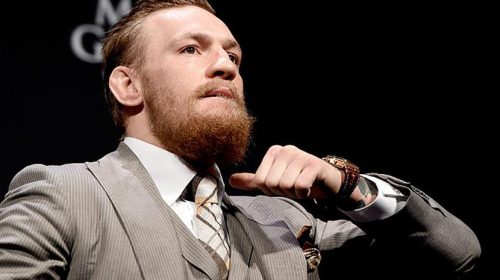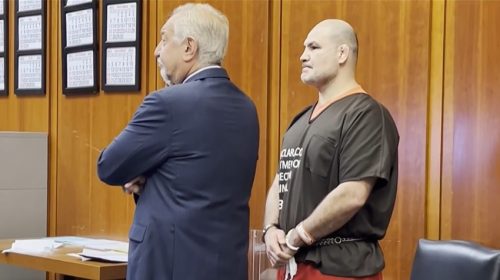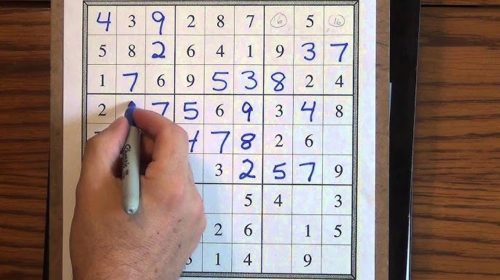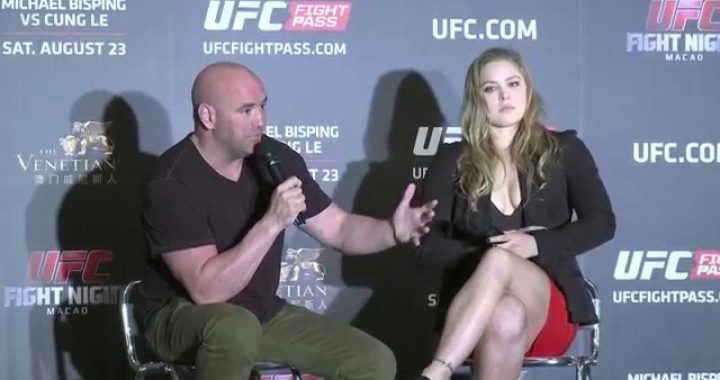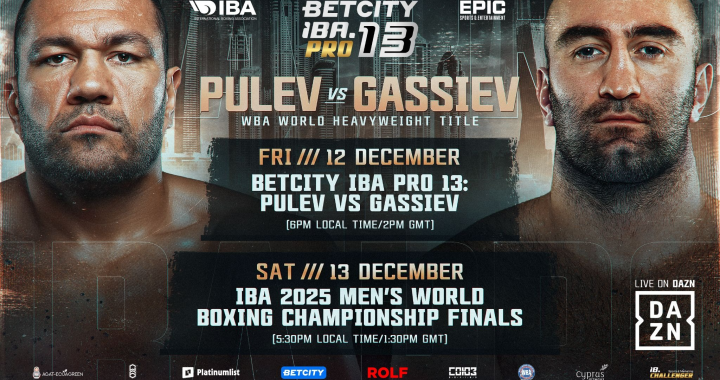
Boxing Across the Nation: Alabama – Joe Louis
Joe Louis – Alabama
Boxing has been apart of the American sports scene since the 1700’s by way of England. It started by infiltrating the larger port towns before eventually working it’s way into the lexicon of America. Starting as an illegal sport which saw it’s athletes arrested, it now showcases some of the most talented combat sports athletes in the world. We will embark on a 50 part saga exploring the best boxers representing the United States. Some states will obviously have more athletes to choose from than others but the journey will be quite the ride. Let’s embark on the journey looking at an interesting fighter from each state.
Growing Up Early Life
Joe Louis (66-3; 52KOs) was born Wednesday May 13, 1914 the seventh of eight children in LaFayette, Alabama. A 2017 census estimates just a tad under 3,000 people live in the town located about 93 miles southwest of Atlanta, Georgia. An eight foot bronze statue of the “Brown Bomber” sits in front of the Chambers County courthouse in downtown LaFayette. Louis’ father was often not around as his father, Munroe Barrow, was often institutionalized and spent time at the Searcy Hospital for the Negro Insane in the town of Mount Vernon, AL. By the time of Louis’ second birthday, his father’s mental issues were to the point of requiring permanent institutionalization.
The only man Louis knew as his father was Pat Brooks, a man with nine children of his own. Around the age of 12, the two large families which were now one, packed up and moved to Detroit, Michigan. This is where boxing would enter Louis’ life and change him, as well as the sport of boxing, forever. Unknown to Louis this whole time, his biological father was still alive, unlike what his mother was told, and he lived until 1938 unaware of his son’s fame.
Finding Boxing
The Brewster-Wheeler Recreation Center is where it all began for a young Louis. His mother chose the violin for Louis to fill his spare time but Louis had other ideas. Louis would also meet a young, aspiring boxer six years his younger at this center. A boxer by the name of Sugar Ray Robinson would spend time with Louis at the center before Robinson moved to New York. Knowing that his mother was not a fan of Louis wanting to box, he dropped his surname and went only by “Joe Louis” in hoping this would keep his mother from finding out. At the age of 17 in 1932 Louis had his first amateur bout and was beat pretty handily. A massive task for Louis in his debut, he lost to Johnny Miller, who represented the United States in that year’s Olympic games.
Picking Up Management
Louis steadily improved and won the 1933 Detroit-area Golden Gloves in the light heavyweight division. John Roxborough, a professional gambler, saw something in Louis and encouraged the future star to allow Louis to become his manager. Spanning two decades, Roxborough would go on to handle practically all of Louis’ affairs. Roxborough went out and found trainer Jack Blackburn to coach the young, amateur Louis. Quite the boxer in his day, Blackburn sported a career 116-25-22 (5NCs) record. He also trained world champions Sammy Mandell and Bud Taylor. Prior to turning pro a few years later in 1934, Louis would earn a record of 50-3 with 43 of those victories via TKO.
Early Professional Career
Louis started off his career with his first 13 professional bouts taking place in the Detroit or Chicago area. Julian Black, a boxing promoter in Chicago, was a friend of Roxborough. He is responsible for getting Louis a his early fights. Due to the image Jack Johnson gave to the public of African American boxers, Roxborough and Blackburn created the “Seven Commandments” for Louis to follow. These “commandments” would keep Louis in the good graces of the “white public” and help steer Louis toward a world title shot. Some of those commandments included to never gloat over a fallen opponent, never take a picture with a white woman, and do not engage in fixed fights.
First Huge Step Toward the Title
June 25, 1935 Louis got his first huge break taking on former world champion Primo Carnera. 64,000 people packed Yankee Stadium to witness the up and coming Louis battle the former world champion Carnera who was coming off of four straight wins after losing his title to German Max Baer. Though it was only June, Louis was taking his eighth fight of the year and had an astounding amount of steam behind him from the American public. Without a doubt Louis’ toughest task to date, Carnera had about a nine inch reach and 65 pound advantage over the 21 year old Louis. Louis pounded Carnera for six rounds, dropping Carnera three times in that round specifically. The media on hand called the stoppage an “act of humanitarianism” by referee Arthur Donavan. Louis also walked away with a nice paycheck earning $44,636.16 which translate to $855,994.97 inflated for 2020.
March Toward Heavyweight Championship
Louis would win his next four bouts including a huge showdown with Max Baer. Their bout was named The Ring 1935 Fight of the Year. The bout took place on September 24, 1935, the same day of Louis’ marriage to Marva Trotter. Louis had the support of the American public while others were pushing Baer as the last “great white hope” of derailing Louis. Reportedly 84,831 paid for entry to Yankee Stadium to see this fight of the year. Late in the third round the 2 to 1 odds favorite Louis dropped Baer with a series of right hands. This was actually the first knockdown of Baer’s career. Baer would eat the canvas again in the same round, being saved by the bell at the count of four. Late in the fourth round Louis dropped Baer with a left hook, leading to the TKO victory.
Representing a Nation
Arguably more important in Louis’ career than winning the title and his impressive streak, was the two fight series with the Germany’s own Max Schmeling. The first fight took place June 19, 1936 and was more than a boxing matchup. To many in the western world it was USA vs Germany, Democracy vs. Nazism. One of boxing’s all-time greatest rivalries, The Louis/Schmeling is subject of a book written by Patrick Myler titled, Fight of the Century: Joe Louis vs Max Schmeling. Prior to the first bout, the American public downplayed the German’s abilities stating at 30 years of age, Schmeling was on the decline of his career.
It’s possible Louis took this too close to heart and did not prepare as needed for the tough German. Media had reported Louis spent much of time learning a new hobby, golf, in New Jersey while Schmeling spent time in the Catskills training hard and trying to win over the Jewish fans in the area. Schmeling said he had discovered a flaw-Louis dropped his left hand when throwing the right jab.
The First Bout
Entering the bout, Louis was a huge favorite to continue his undefeated streak. The first three rounds saw Schmeling utilize his jab with the cross soon followed behind. In the fourth round Schmeling finally landed a big blow and dropped Louis for the first time in his professional career. Schmeling continued to win the judges’ scorecards heading into the 12th of 15 scheduled rounds. In the 12th round Schmeling landed a series of rights, one to the body and one to the head, which dropped Louis and led to the 10 count. This would be the only knockout loss suffered by Louis until his retirement bout against Rocky Marciano about 15 years later.
Heading Into the Second Bout and the Huge Event Itself
Louis looked at the first Schmeling bout as lesson learned. He would go on to win his next 11 bouts in a row including defeating James J. Braddock via eighth round KO in Chicago. Louis said he refused to let anyone call him “world champion” until he fought Schmeling again. Schmeling was actually set to battle Braddock after defeating Louis but the powers that be saw it not a great idea for Schmeling to become world champion, potentially allowing Hitler to dictate the title and only let it be defended on Nazi soil. Louis was the man they wanted all along to wear the crown.
The rematch was official set for June 22, 1938, at a time when Germany was beginning to have much of it’s issues with the Western powers. Racial charged propaganda began to fly at the hands of Joseph Goebbels, Hitler’s minister of propaganda. Though proud to be German, Schmeling claimed to not support the Nazi party. He even kept his Jewish manager to prove the point.
Conclusion to One of the Sport’s Greatest Rivalries
June 22nd was a very special day to Louis. In 1937 on that day he won the world championship from Braddock. On the same day in 1938 he would have arguably his most important bout in his career against Schmeling. 72,000 crowded into Yankee Stadium in what many Americans considered a defining moment in the battle against Nazi Germany, though Schmeling stated on multiple occasions to not be apart of the Nazi party. The ears of the nation and the world were at full attention with nearly 70 million people listening to the blow by blow via radio. Stepping into the ring as a three to one favorite, Louis would not disappoint.
The Ring’s Fight of the Decade (1930s) went all of 124 seconds. That’s all the time Louis needed to drop Schmeling three times and fracture Schmeling’s third and fourth lumbar vertebra. Louis told famed sports writer Jimmy Cannon prior to the bout that he would knockout Schmeling in one round after Cannon told him he predicted a sixth round KO for Louis. Louis had brought together a nation. White or black, it did not matter. The American was still the world champion and the German was sent home packing.
“Bum of the Month Club” and Riding Off Into the Sunset
The Schmeling rematch victory was Louis’ fourth title defense. He would go on to defend the title a record of 25 times. The 25 defenses are still a record for title defenses in a single weight division. Though Louis had a close call against Irish boxer Billy Conn, the media often referred to Louis’ challengers as the “bum of the month club.” The first bout with Conn took place June 18, 1941 at the New York Polo Grounds in front of 54,487 fans. Conn was up on two scorecards and tied on the third when Louis landed a knockout in the 13th round.
The Importance of the Conn Rematch
After being named by The Ring as one of the greatest title fights in history, Conn earned his shot at a rematch with Joe Louis. This time the event took place in front of 45,266 at Yankee Stadium on June 19, 1946. This bout was full of special moments for the sport. The Louis/Conn rematch was the first world heavyweight title fight aired on television, which was done so by NBC. In the five years between the two bouts, both men were busy serving in World War II and Louis considered those four bouts in between as “exhibitions” because he donated that money. A popular saying in American culture, “he can run but he can’t hide” was coined by Louis when he made the statement about Conn for their rematch.
Jersey Joe and Losing the Title
Louis’ last great rivalry came with New Jersey native, Jersey Joe Walcott. Walking into Madison Square Garden as a 10 to 1 underdog, Walcott almost walked out the new world heavyweight champion. Dropping Louis in multiple rounds, many spectators and sports writers had Walcott winning the split decision that Louis actually took. Taking place on December 05, 1947, the rematch was slated for June 25, 1948. The rematch took place this time in Yankee Stadium in front of nearly 42,000 people. The bout seemed to start off similar to the last, with Walcott dropping Louis. Louis was able to turn the tide and knockout Walcott in the 11th round.
Fighting longer than need be, the inevitable was set to occur on September 27, 1950 when Louis battled a hungry Ezzard Charles. With the title being vacated after the second Walcott bout, Charles defeated the former long-time champion to reign as the division’s new champion. This would be Louis’ last time in the ring contending for a world championship. After a handful of bouts, Louis’ finale came against a young Rocky Marciano. At the end of the bout where Louis sustained a major beatdown at the hands of the younger, hard hitting Marciano, he is quoted as telling Louis after the bout, “I’m sorry, Joe.”
Post Fighting Career
In 1952 Louis fulfilled another dream, playing in the San Diego Open on a sponsor’s exemption. Louis was a huge reason the color barrier was broken in professional golf. At the time there was a “Caucasians Only” clause disallowing African Americans from participating. The next week at the Phoenix Open, Louis was joined by black golfers Bill Spiller and Eural Clark. These golfers led the march to allow African Americans to participate in golf tournaments in North America.
On April 12, 1981 Louis passed away of cardiac arrest. Schmeling, his long-time rival, helped pay for Louis’ funeral expenses. His memory lived on, not only in boxing, but in other sports as well. The Detroit Red Wings hockey team played their home games in the Joe Louis Arena from 1979 to 2017. In 1982 Louis was posthumously approved for the Congressional Gold Medal. This is the highest award given to an American civilian. In 1986 the sculpture of an arm with a fist was suspended 24 feet in the air in Detroit. The sculpture was commissioned by Time Inc. The first is to symbolize the power of Joe Louis in and out of the ring.




